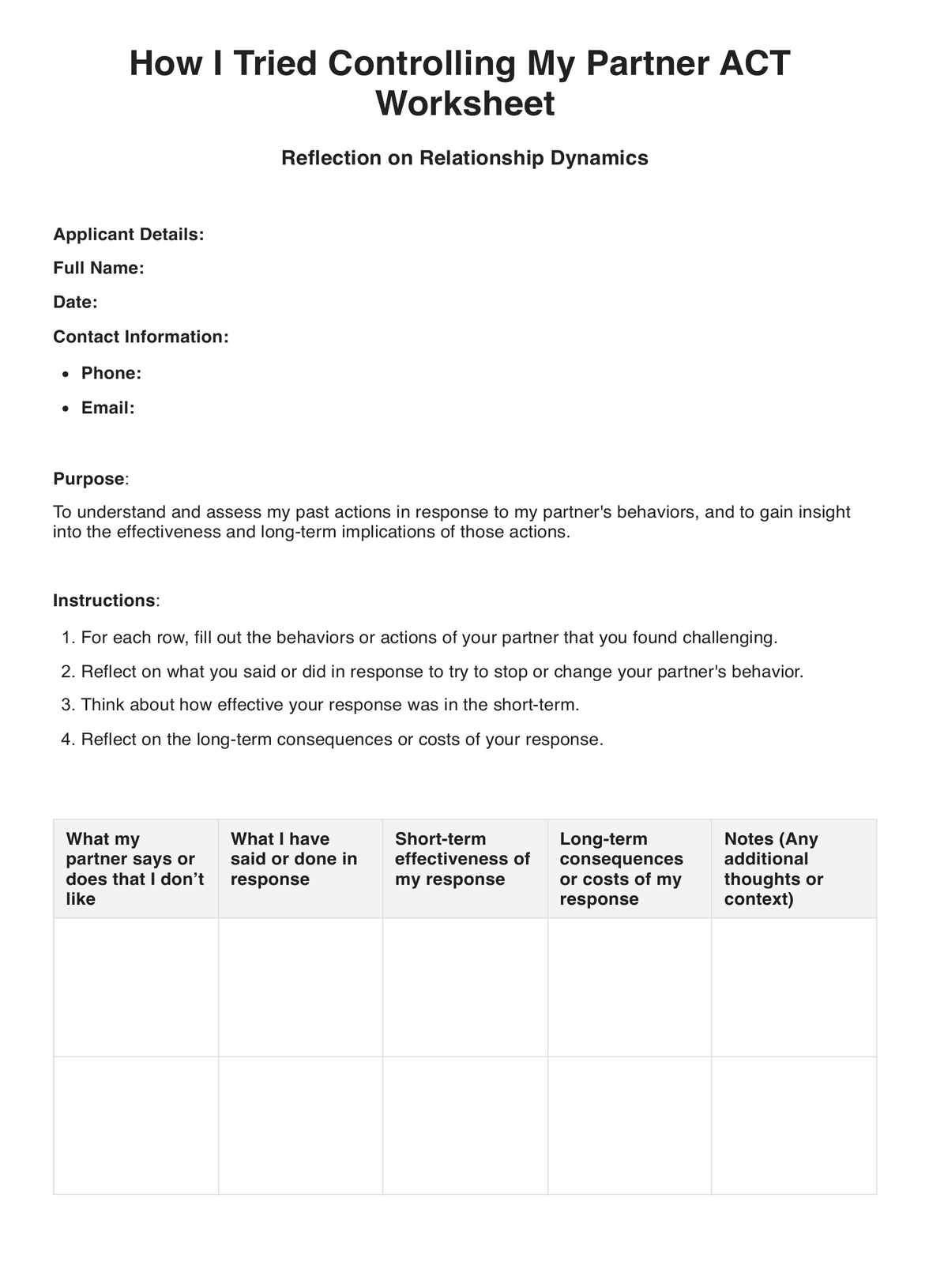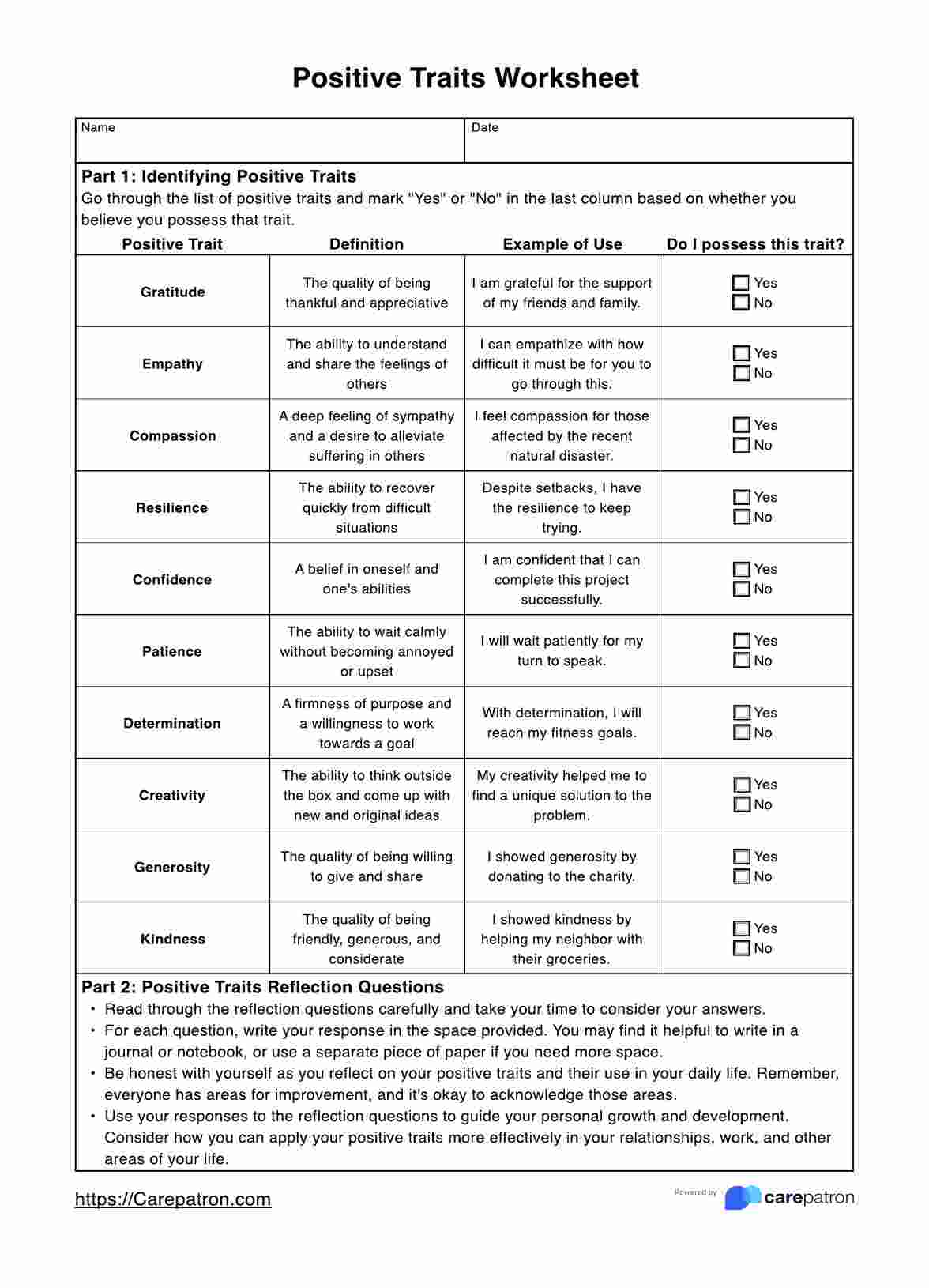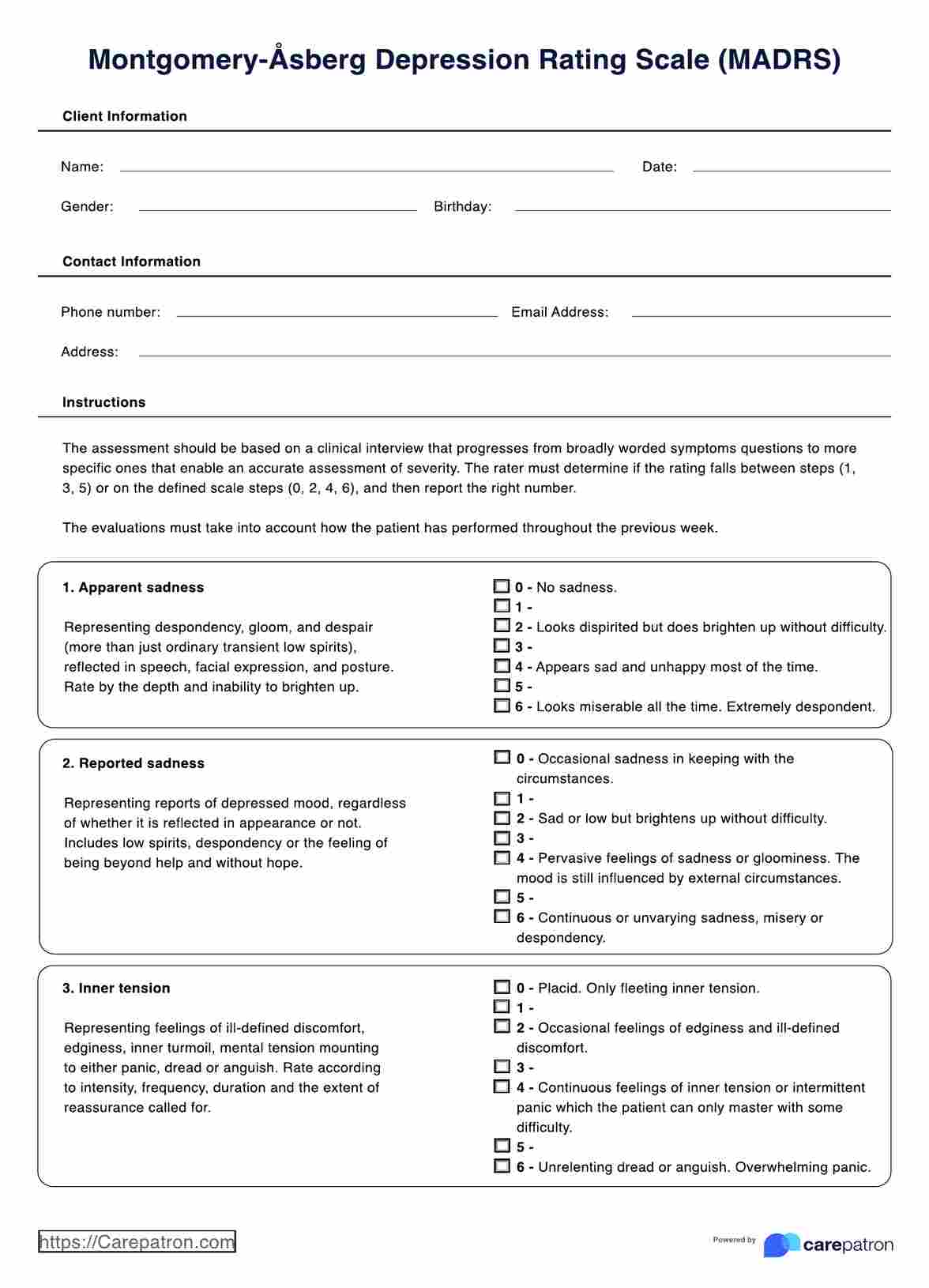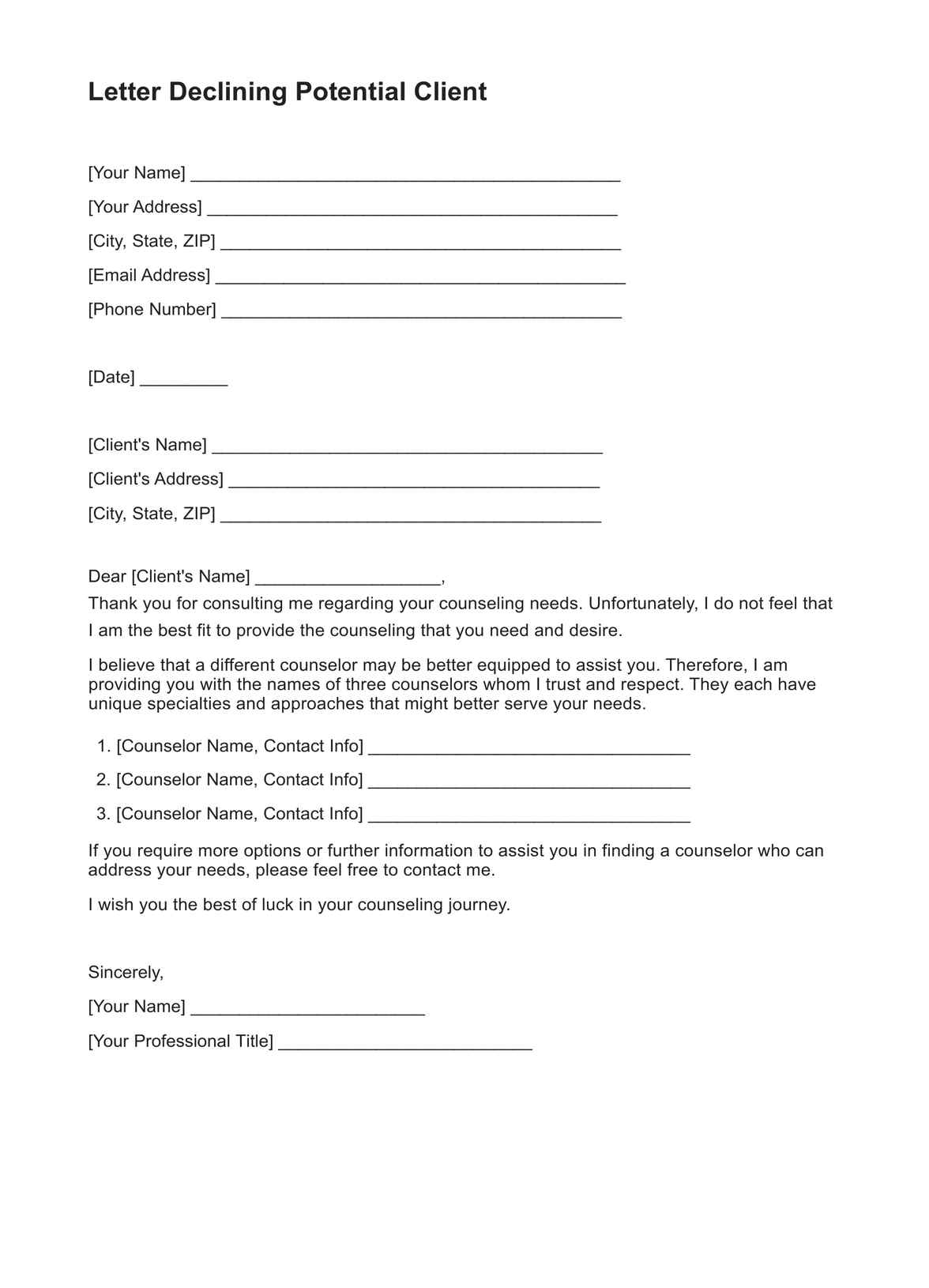Understanding Your Emotions When You're Upset PTSD Worksheet
Manage PTSD: Explore Emotions in Upset with Our Worksheet - Improve Healthcare & Coping Skills Today!


What is Trauma and PTSD?
Trauma is a psychological and emotional response to a distressing or disturbing event or series of events that exceeds an individual's capacity to cope with and process effectively. Traumatic experiences can vary widely and may include natural disasters, accidents, physical or sexual assault, combat exposure, and more.
When someone undergoes trauma, their emotional and psychological equilibrium can be severely disrupted, leading to a range of emotional responses and lasting effects.
Post-Traumatic Stress Disorder (PTSD) is a condition that can develop following exposure to traumatic events. It's characterized by a constellation of symptoms that persist for an extended period, often months or even years, after the traumatic incident. These symptoms can be grouped into four categories:
- Re-experiencing: People with PTSD may have intrusive memories, nightmares, or flashbacks of the traumatic event. These reliving experiences can be intensely emotional and distressing, making moving on from the trauma difficult.
- Avoidance: Individuals with PTSD often go to great lengths to avoid reminders of the trauma, including places, people, activities, or conversations that may trigger distressing memories or emotions. This avoidance can lead to social isolation and emotional numbness.
- Negative Alterations in Cognition and Mood: PTSD can change a person's thoughts about themselves and the world. They may develop negative beliefs about themselves or others, experience persistent negative emotions, and struggle with memory problems or feelings of detachment from reality.
- Arousal and Reactivity: People with PTSD may become more easily startled, irritable, or have difficulty sleeping and concentrating. These symptoms can contribute to a heightened state of anxiety and emotional reactivity.
Emotions are central to PTSD, as the disorder involves intense emotional responses to past traumas. Understanding and managing these emotions is crucial in the treatment and recovery process. Therapy approaches such as cognitive-behavioral therapy (CBT), exposure therapy, and Eye Movement Desensitization and Reprocessing (EMDR) aim to help individuals process their emotions and develop coping strategies to reduce the impact of PTSD on their lives.
Understanding Your Emotions When You're Upset PTSD Worksheet Template
Understanding Your Emotions When You're Upset PTSD Worksheet Example
How to use the Understanding Your Emotions When You’re Upset Ptsd Worksheet
The Understanding Your Emotions When You're Upset PTSD Worksheet is a valuable tool designed to assist individuals dealing with Post-Traumatic Stress Disorder (PTSD) comprehend and manage their emotions during distressing moments. This worksheet empowers patients to explore their emotional responses to specific triggers associated with their PTSD, identify unhealthy coping mechanisms, and develop healthier strategies to address and mitigate emotional turmoil.
Steps to Use the Understanding Your Emotions When You're Upset PTSD Worksheet:
Introduction
Begin by introducing the worksheet to the patient, emphasizing its purpose as a self-assessment and self-improvement tool. Explain that it is designed to enhance their emotional self-awareness and assist in developing effective coping mechanisms.
Identifying Triggers
In the first section, patients should list the situations or triggers that recently caused them to feel upset due to their PTSD. These triggers, such as crowded places, loud noises, or intrusive memories, can vary widely.
Recognizing Emotions
For each trigger listed, patients should describe the specific emotions they experienced. Encourage them to be as detailed as possible in articulating their emotional responses and to rate the intensity of these emotions on a scale of 1-10.
Emotional Responses
In this section, patients should reflect on how they typically responded to these upsetting emotions in the past. This could include avoidance, isolation, anger, or any other reactions they identify.
Coping Strategies
Patients should brainstorm and list healthy coping strategies when faced with triggers and upsetting emotions. These strategies include breathing exercises, therapy, mindfulness, or self-care activities.
Self-Care Plan
Patients are prompted to develop a personalized self-care plan to implement when they feel upset due to PTSD triggers. This plan should include specific self-soothing activities and readily available resources such as crisis helplines and supportive contacts.
Reflection
The final step encourages patients to reflect on what insights they have gained from completing the worksheet and what changes they plan to make in their response to triggers and emotions moving forward.
The Understanding Your Emotions When You're Upset PTSD Worksheet empowers individuals with PTSD to take an active role in their emotional well-being and recovery. It fosters self-awareness, promotes healthier coping mechanisms, and provides a structured framework for discussions with healthcare practitioners to tailor treatment plans effectively.
When Would You Use This Understanding Your Emotions When You’re Upset PTSD Worksheet?
The Understanding Your Emotions When You're Upset PTSD Worksheet is a valuable resource used in various scenarios and by different healthcare professionals to assist individuals dealing with Post-Traumatic Stress Disorder (PTSD). Here are some of the most appropriate times and situations for its utilization:
During Therapy Sessions
Mental health professionals, such as therapists, psychologists, and counselors, can incorporate this worksheet into therapy sessions for individuals with PTSD. It serves as a structured tool to delve into the patient's emotional responses to triggers, facilitating meaningful discussions and guiding the development of coping strategies.
As Part of PTSD Treatment Plans
Psychiatrists and other healthcare providers specializing in trauma-related care can include this worksheet as an integral component of a patient's overall PTSD treatment plan. It helps monitor progress, identify improvement areas, and adjust therapeutic approaches accordingly.
After Trauma Exposure
Following a traumatic event or when PTSD symptoms become more pronounced, individuals can use this worksheet to gain insight into their emotional reactions. It offers a structured means of self-assessment and a starting point for seeking professional help.
In Support Groups
Support group leaders or facilitators can use this worksheet as a discussion tool in group therapy settings. It enables participants to share their experiences, learn from others, and develop coping strategies collaboratively.
For Self-Help and Self-Reflection
Individuals can access and use the worksheet independently as part of their self-help journey. It provides a framework for self-reflection, helping them better understand their emotions and identify areas where they may need additional support.
During Crisis or Triggered Moments
In acute distress or when PTSD triggers are activated, individuals can use this worksheet to ground themselves, manage their emotions, and implement their pre-defined coping strategies.
As a Regular Monitoring Tool
Even when PTSD symptoms are relatively stable, this worksheet can be used periodically to track emotional responses, ensuring that individuals consistently manage their condition and progress.
What are the Benefits of Using This Understanding Your Emotions When You’re Upset PTSD Worksheet?
The free Understanding Your Emotions When You're Upset PTSD Worksheet offers several significant benefits for individuals dealing with Post-Traumatic Stress Disorder (PTSD):
Enhanced Self-Awareness
This worksheet encourages individuals to delve deep into their emotional responses to triggers. By identifying and articulating their emotions, individuals gain a heightened self-awareness, which is crucial for managing PTSD effectively.
Structured Self-Help
It provides a structured framework for individuals to explore and address their emotions independently. This empowers them to actively participate in their emotional well-being outside therapy or professional support.
Improved Coping Strategies
Individuals can develop and document healthier coping strategies tailored to their triggers and emotional reactions through the worksheet's guidance. This aids in building a repertoire of practical tools for managing distress.
Facilitated Communication
This worksheet is a communication tool for individuals in therapy or support groups. It helps articulate experiences and emotions, fostering more productive and meaningful discussions with healthcare professionals or peers.
Progress Tracking
Over time, the worksheet can be used to monitor progress in emotional regulation and coping. By regularly revisiting and updating it, individuals can see how their emotional responses evolve and identify areas where they have improved.
Customized Self-Care
The self-care plan section allows individuals to identify personalized self-soothing activities and readily available resources. This tailored approach ensures that self-care strategies align with their unique needs and preferences.
Reduced Isolation
Completing the worksheet can help individuals recognize that they are not alone in their emotional experiences. It can be reassuring to see commonalities in emotional responses among individuals with PTSD, reducing feelings of isolation.
For more valuable resources that can elevate your practice and client satisfaction, consider the care plan, self-care plan, PTSD treatment plan, and PTSD worksheet templates.
Commonly asked questions
This worksheet is designed to help individuals with Post-Traumatic Stress Disorder (PTSD) understand and manage their emotions when they feel upset due to PTSD triggers.
This worksheet can be used by individuals dealing with PTSD as a self-help tool and by healthcare professionals, including therapists and counselors, to assist their clients in therapy.
No, this worksheet is not a substitute for professional therapy. It can complement treatment by providing a structured way to explore emotions and develop coping strategies, but it should differ from professional guidance.


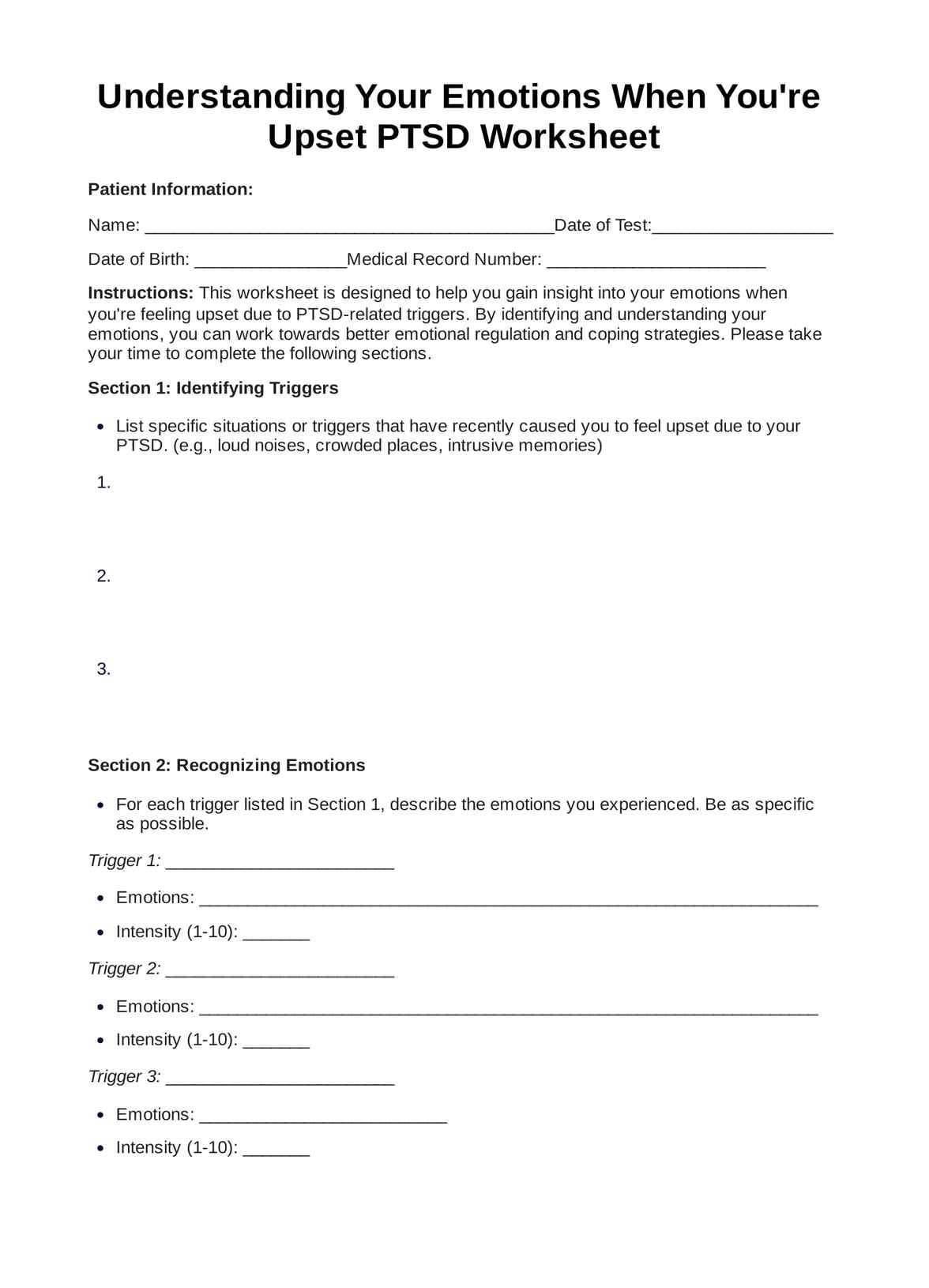
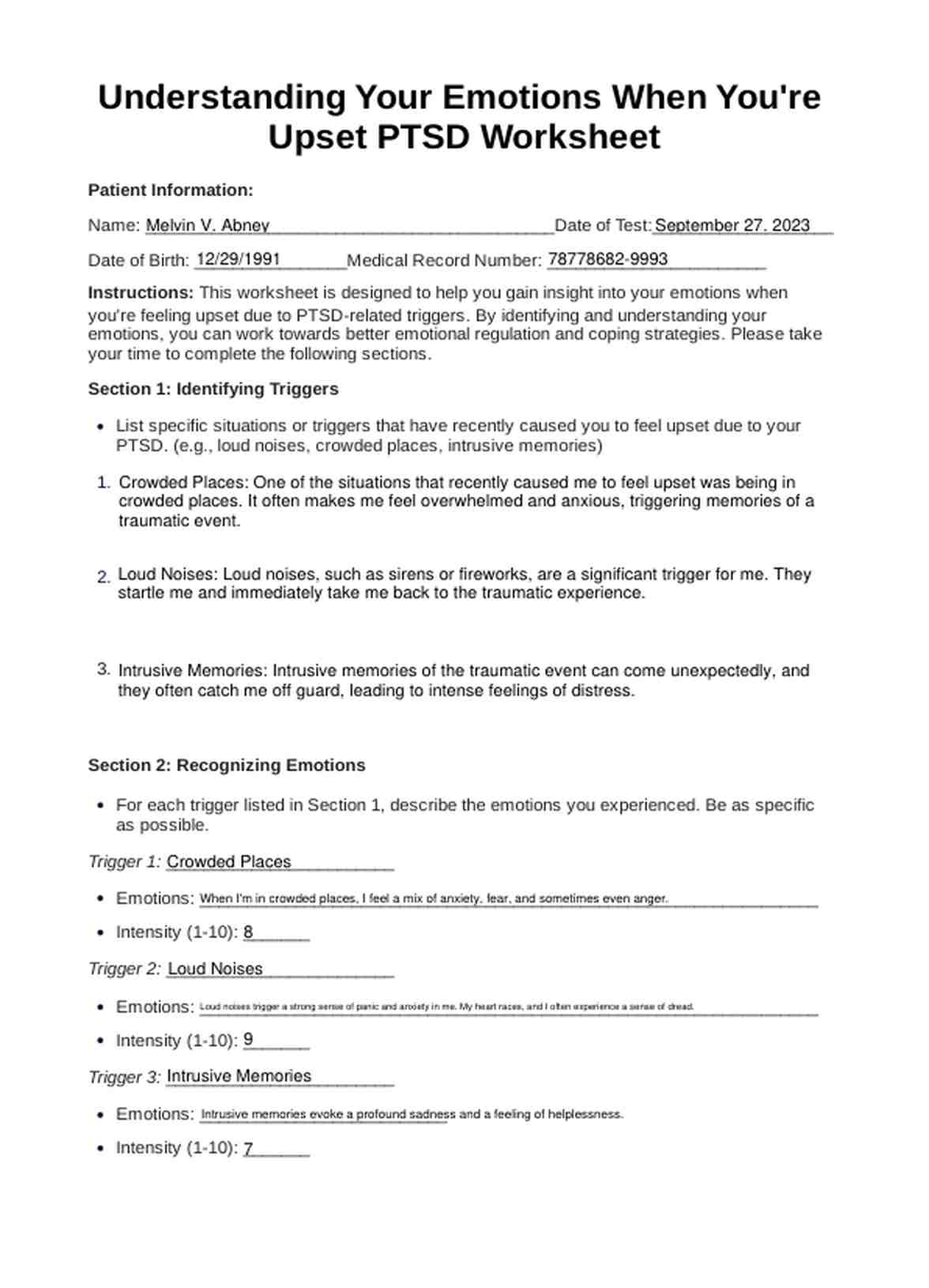
















-template.jpg)


























































































